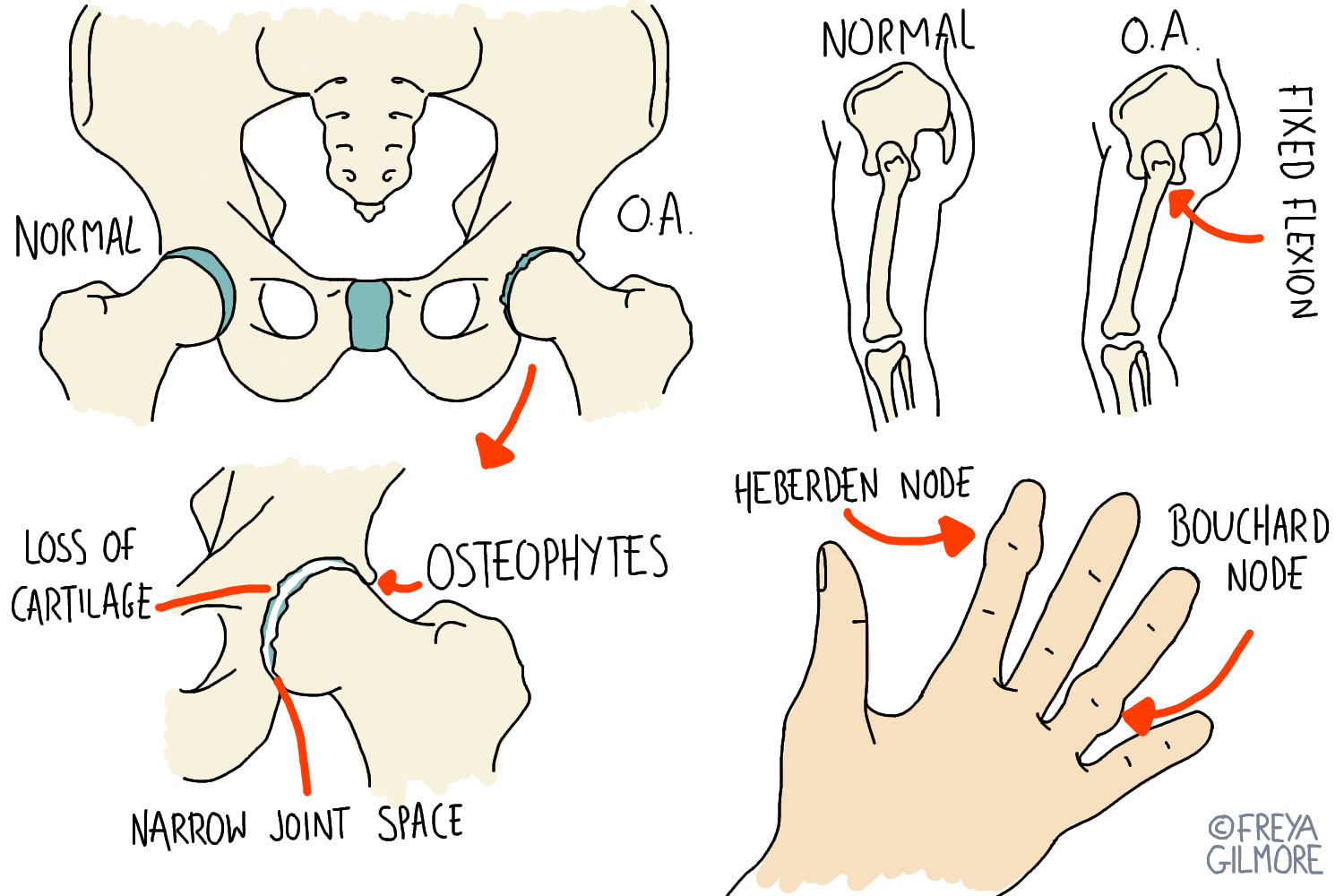Osteoarthritis
Osteoarthritis is commonly simply known as “arthritis”. We might think of it as “wear and tear”, but it’s also capable of “repair”. Despite popular belief, it’s not something you just have to tolerate.
Osteoarthritis commonly affects the hips and knees, but it can also affect the spine and hands. All of these areas can be helped by osteopathy.
The cycle of osteoarthritis
Pain or simply habit can cause us to limit our movement through a joint. This change can easily go unnoticed for quite a while. Joints that are cushioned by cartilage need to go through their full range of movement to keep the cartilage healthy. If some of the joint is not moved, the cartilage there stays compressed or decompressed. Either way, this means nutrients can’t efficiently get in, and waste can’t get out.
As the cartilage becomes unhealthy, it might be painful or crunchy to use. So the body avoids it further, whether you realise or not. A cycle begins where pain causes reduced movement, which further degrades the joint, so movement is reduced again. For some joints, this means significant compensation. Arthritis in the hip tends to affect the back of the joint first. The body adapts to this by tilting the pelvis, using more forward movement and relying less on the painful range. Over time, this can lead to a stooped posture, which in turn leads to a strain in the neck as you work harder to keep your head up.
It sounds like a major change, but often it’s so slow it happens unnoticed. However, if you do spot it, you can do something about it.
How osteopathy helps
The aim of treatment is to help the cartilage get healthier again. This is done by breaking the cycle of pain-restriction-pain.
When the body makes the aforementioned adaptions, it involves the joints, surrounding muscles, and the brain. So we need to target all elements to make a lasting change. Working through the joint movement during appointments gives the cartilage a boost, and teaches the brain that the movement is safe. Loosening the muscles that were holding the joint tight makes it easier for you to get back to normal movement.
A combination of treatment and exercise has been shown to be effective in managing osteoarthritis. Movement and pain have both shown to be improved after manual therapy.
It’s never too early to start managing your arthritis. Book in with one of our osteopaths today and slow the progression of your osteoarthritis.

